Knowing how to give a dog a pill is an essential skill for every pet owner. Whether your furry friend needs medication for a temporary illness or a chronic condition, administering pills can be a daunting task. Many dog owners struggle with this aspect of pet care, as some dogs are resistant to taking pills or become stressed during the process. However, with the right techniques and a patient approach, you can make pill-giving a more pleasant experience for both you and your dog. In this article, we’ll explore effective tips and tricks to help you navigate the world of dog medical issues and treatments, focusing on the art of successfully giving your dog a pill.
Key Takeaway
- Giving your dog a pill can be challenging, but using the right techniques makes it easier and less stressful.
- Hiding pills in food, using a pill gun, or having medication compounded are effective methods.
- Always follow your vet’s dosing instructions and seek their advice if you have trouble giving your dog medication.
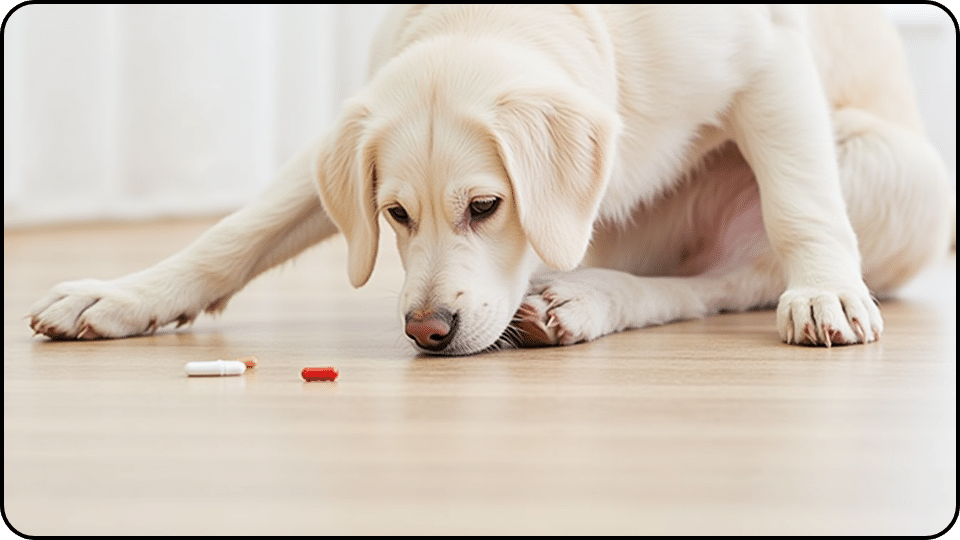
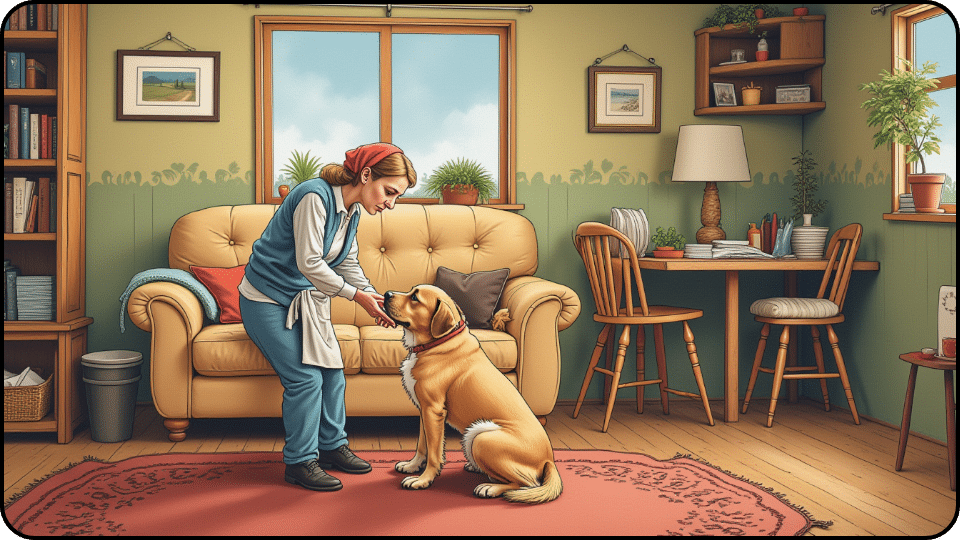
Understanding Dog Medication and Pills
Understanding the different types of dog medication and pills prescribed by vets is vital for pet parents. Medications can come in forms such as tablets, capsules, liquid medications, or chewable treats. It is important to choose the right form of dog’s medicine and be aware of potential issues that can arise from incorrect administration methods, such as crushing pills or microwaving medications. Each type requires a specific method of administration based on your dog’s preferences and medical needs.
Carefully following dosing instructions is crucial to ensure the medication’s effectiveness and your dog’s safety. Incorrect dosages can lead to ineffective treatment or harm, so always measure liquid medicine accurately. Administer pills or capsules as prescribed, and consult your vet if you’re uncertain about the dosage.

Consider any food sensitivities or dietary restrictions when giving your dog pills. Some dogs may be allergic to ingredients found in pill pockets or wraps, so opt for hypoallergenic options if necessary. Additionally, certain medications may interact with specific foods, so avoid dairy products or other restricted foods.
Staying organized with a list of your dog’s medications, including their form, dosage, and special instructions, can help ensure all medications are given correctly. This organization contributes to your dog’s health and well-being, ensuring they receive the full benefit of their prescribed treatments.


Preparing to Give Your Dog a Pill
Giving your dog a pill may seem daunting, but with the right preparation, it becomes manageable. Start by selecting a quiet, calm location where your dog feels safe and relaxed, minimizing stress for both of you. Have the pill and any necessary tools, like a pill gun or oral syringe, ready beforehand to streamline the process.
Consider hiding the pill in a special treat or appealing food, such as deli meats or cheese, which can effectively conceal the pill. Alternatively, use pill pockets or wraps designed for this purpose, as they help mask the pill’s smell and taste, increasing the likelihood your dog will eat it without hesitation.
If your dog resists, gently restrain them to administer the pill directly. Place your hand gently on their muzzle, ensuring a firm yet gentle grip on the dog’s muzzle to facilitate the process. Tilt their head back slightly, properly positioning the dog’s head to make the process easier, and place the pill at the back of their tongue. Hold their mouth closed momentarily and gently stroke their throat to encourage swallowing.
Patience and consistency are key, so reward your dog with praise or a favorite treat after they successfully take their medication. This positive reinforcement can make future pill-giving sessions easier and less stressful for both of you. By preparing in advance and choosing the right method, you can ensure that giving your dog a pill becomes a smooth and stress-free experience.
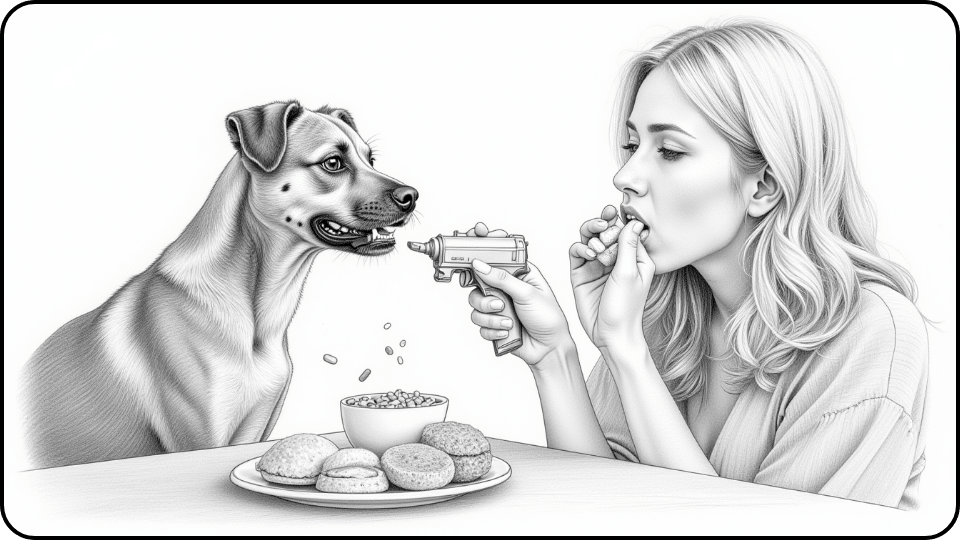
Teaching Your Dog to Take Pills
Transforming the task of giving your dog pills into a positive experience can greatly alleviate the challenge. Begin by associating pill time with something your dog loves, such as treats or praise, to create a positive connection. This approach helps make future medication sessions less stressful.
Hand-feeding pills hidden in small pieces of food, like deli meats or cheese, is an effective method, effectively creating a hidden pill that your dog is more likely to consume without noticing. Not only does this disguise the taste and smell of the medication, but it also turns pill time into treat time. Consistency is key when teaching your dog to take medication.
Be patient, as learning takes time, and always maintain a calm and gentle approach to prevent anxiety. Over time, your dog will become more comfortable with the routine, making the process smoother for both of you.
Remember to reward your dog after they successfully take their medication, whether with a favorite treat, extra playtime, or lots of praise. This positive reinforcement encourages good behavior and makes medication time something they look forward to.
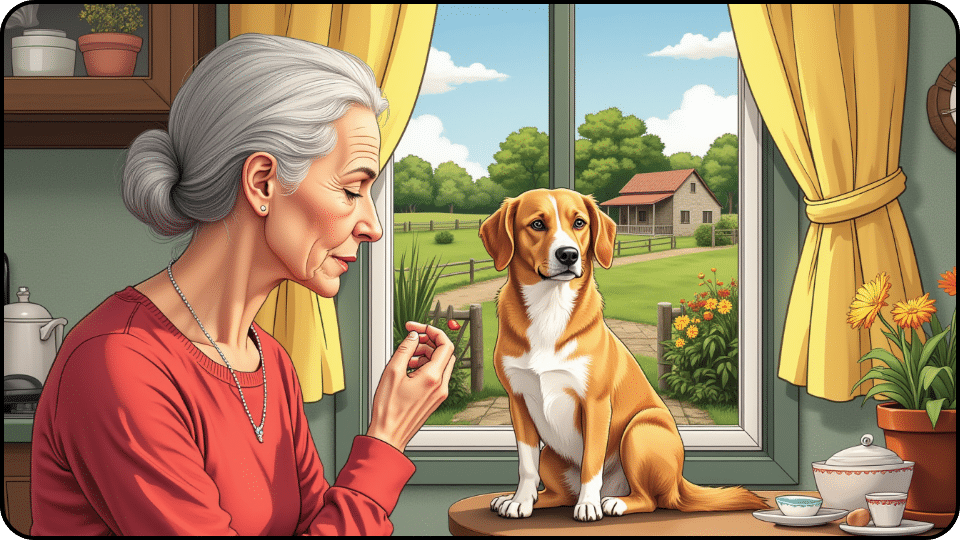
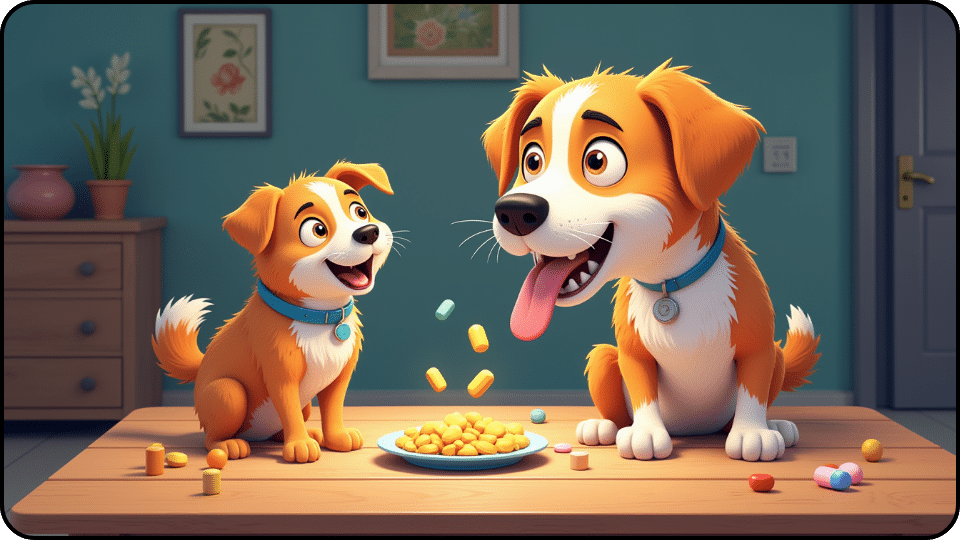
How to Give a Dog a Pill Directly Into Their Mouth
Administering a pill directly into your dog’s mouth can be simplified with the right approach. Start by gently grasping your dog’s muzzle with your dominant hand to keep their head steady. Use your other hand to carefully open their mouth by positioning your fingers around the canine teeth to maintain control.
Once their mouth is open, place the pill as far back on their tongue as possible, ensuring it is placed correctly in the dog’s mouth for easier swallowing. After placing the pill, close your dog’s mouth gently and hold it shut momentarily to encourage swallowing. You can stimulate this reflex by gently stroking their throat or blowing lightly on their nose, which often prompts a natural swallowing response.
Ensure your dog’s head remains in a normal position to avoid discomfort or triggering a gag reflex. Maintaining a calm demeanor throughout the process can help alleviate your dog’s anxiety. Reward your dog with praise or a small treat after they successfully swallow the pill.
This positive reinforcement encourages good behavior and makes future medication sessions easier. Over time, this practice can make your dog more cooperative, easing the process for both of you.
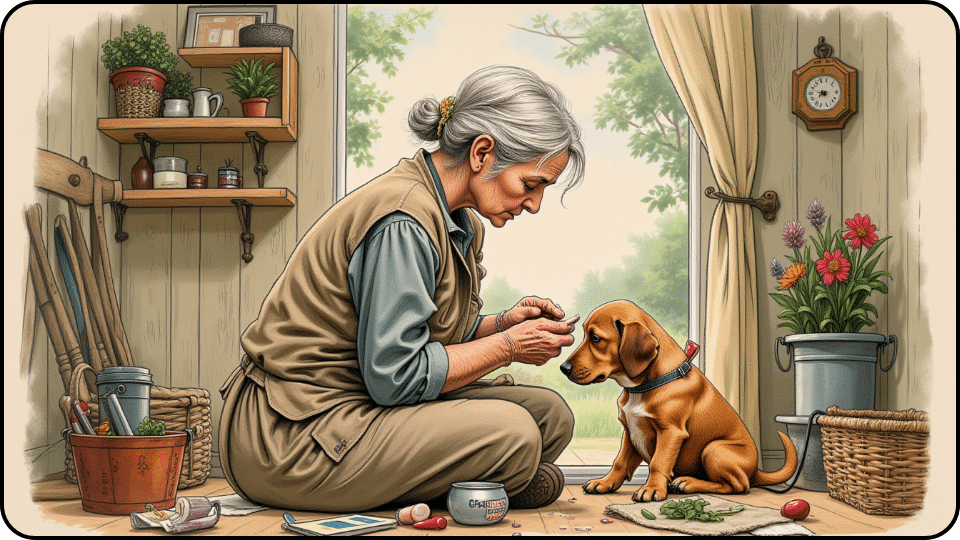
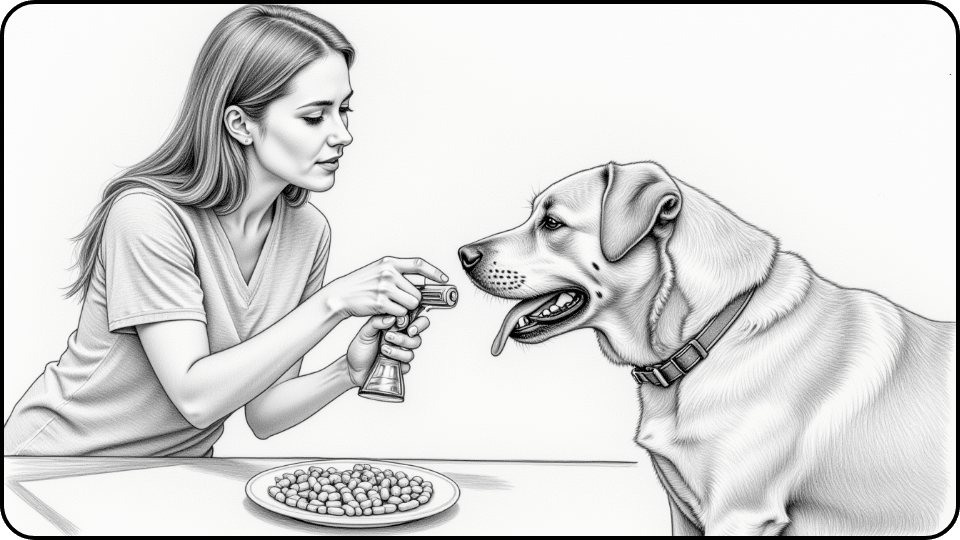
Using a Pill Gun for Dogs Pills
Using a pill gun can be an effective method for administering dog pills, as it helps prevent dog bites by ensuring the dog bites the tube of the device instead of your hand, especially if your dog is resistant to taking medication.
How to do it step-by-step
- Prepare the Pill Gun: Place the pill securely in the pill gun. Make sure it is seated properly to avoid any mishaps during administration.
- Positioning Your Dog: Approach your dog calmly and gently. Insert the pill gun into the side of your dog’s mouth. This approach helps in avoiding triggering your dog’s gag reflex.
- Aim and Release: Aim the pill gun toward the back of your dog’s tongue. This is crucial as it minimizes the chance of your dog spitting the pill out. Slowly, squirt the pill out with a steady hand.
- Encourage Swallowing: After releasing the pill, gently hold your dog’s mouth closed. This helps to ensure that the pill is swallowed. You can stimulate the swallowing reflex by gently stroking your dog’s throat.
- Additional Tips: Blowing lightly on your dog’s nose can also encourage swallowing. Maintain a calm demeanor throughout the process to keep your dog relaxed.
- Reward and Reinforce: Once the pill is swallowed, reward your dog with praise or a small treat. This positive reinforcement creates a good association with taking medication, making future pill-giving sessions easier.
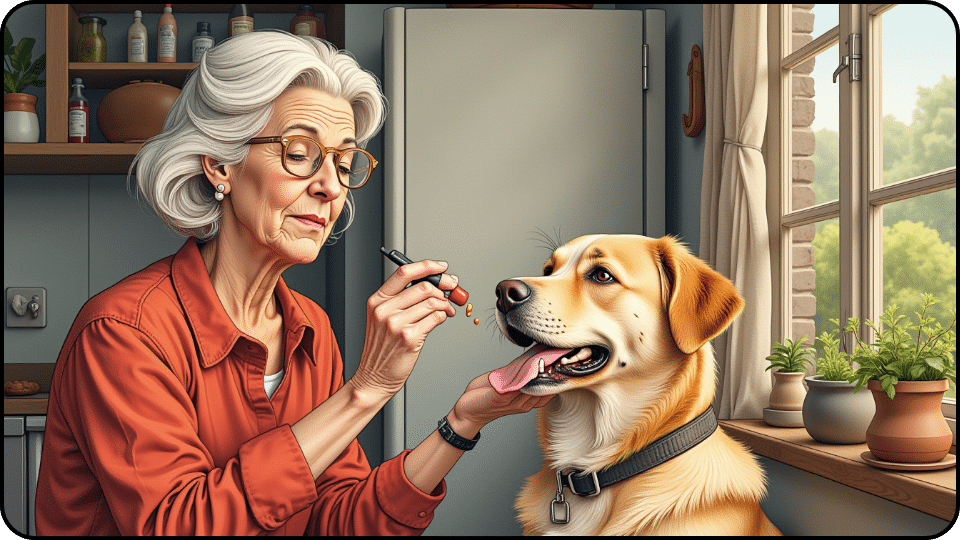

Considerations
Always consult your vet if you’re unsure about using a pill gun or if your dog has specific medical needs. Using a pill gun is just one of many options available for administering medication, and it may not be suitable for all dogs. It’s important to choose the method that best fits your dog’s temperament and health requirements.
Hiding Dog Pills in Food
Hiding dog pills in food is a clever and effective way to ensure your pet takes their medication without fuss, especially if the dog eats the entire portion containing the medication. Many dogs are naturally food-motivated, making this method particularly successful. Choose strong-smelling, appealing treats that align with your dog’s dietary needs. This approach not only masks the pill’s taste but also turns medication time into a treat time.
Consider using pill pockets, which are specially designed to conceal pills, ensuring that the dog’s pills are effectively hidden. They come in various flavors and sizes, catering to different dogs and their preferences. If your dog has dietary restrictions or food sensitivities, you can make your own pill wraps using safe ingredients like peanut butter or wet food. This customization ensures your dog receives their medication without any adverse reactions.
Offer these treats with hidden pills during normal feeding times to help your dog associate taking pills with their regular meals, reducing any suspicion. Ensure the pill is completely covered to avoid detection and present it as a special treat during medication time. This positive reinforcement encourages your dog to take their pills willingly and strengthens the bond between you and your pet.
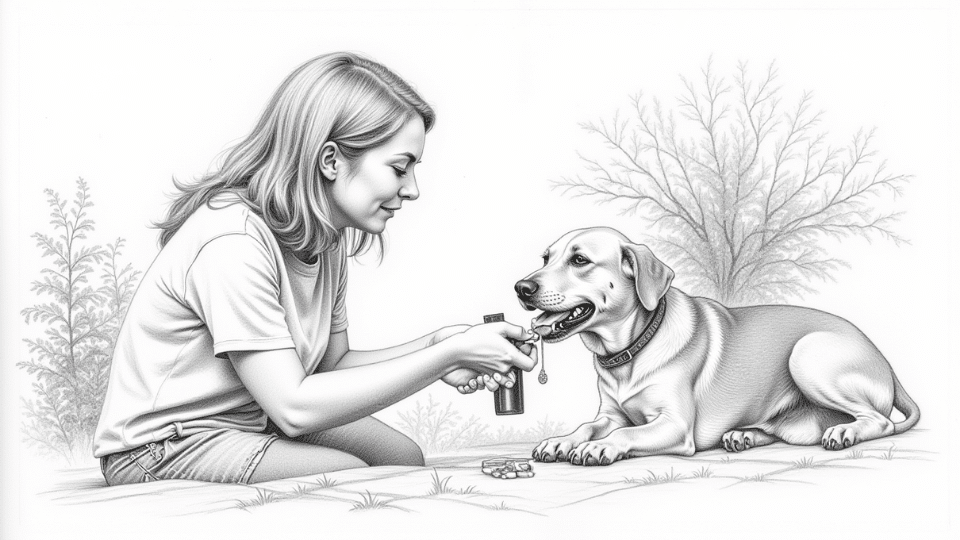
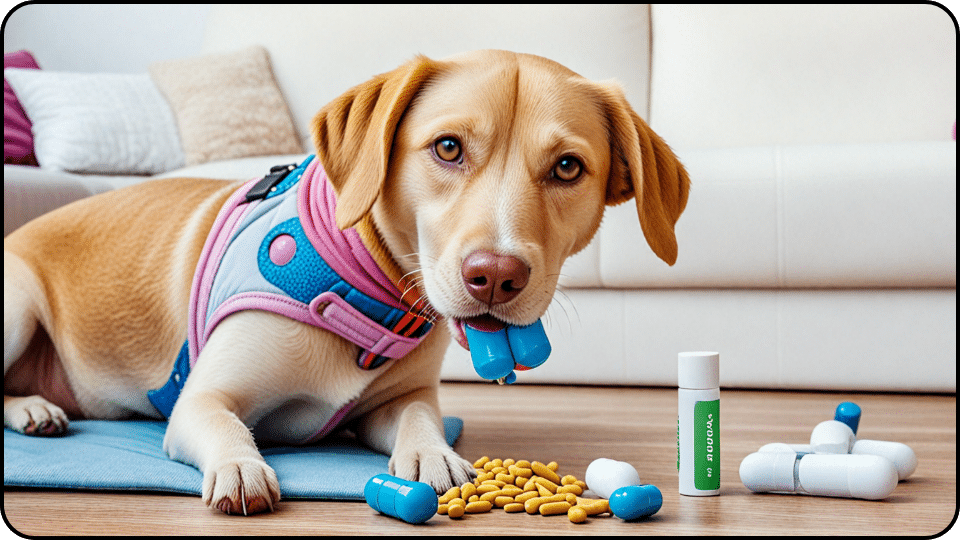
Pill Pockets and Wraps for Dogs
Choosing the right pill pockets and wraps is crucial for successfully administering your dog’s pills. Consider your dog’s size and any food sensitivities they may have. Hypoallergenic options are available for dogs with specific dietary needs, ensuring they receive their medication without adverse reactions.
To use a pill pocket, pinch off pieces of the treat and completely surround the pill, masking its smell and taste. This method is particularly effective for food-motivated dogs, as it turns medication time into treat time. Present the pill pocket as a special treat during medication time to build a positive association with taking medicine.
Consistency is key; by creating a routine, your dog may begin to look forward to this special treat. You can also track different pill pocket flavors and their compatibility with your dog’s medications. Experimenting with various flavors can keep your dog engaged. By taking these steps, you can ensure that giving your dog a pill becomes a stress-free part of your routine.
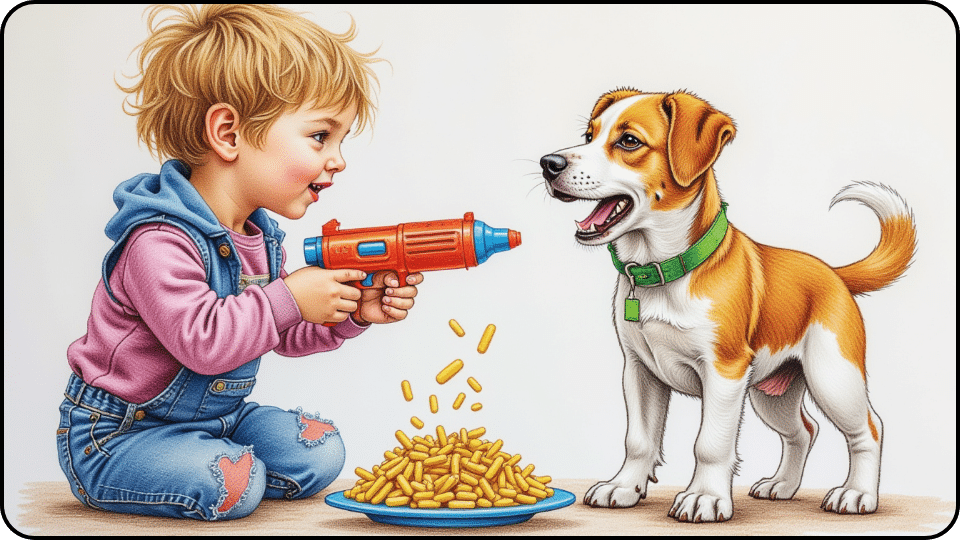
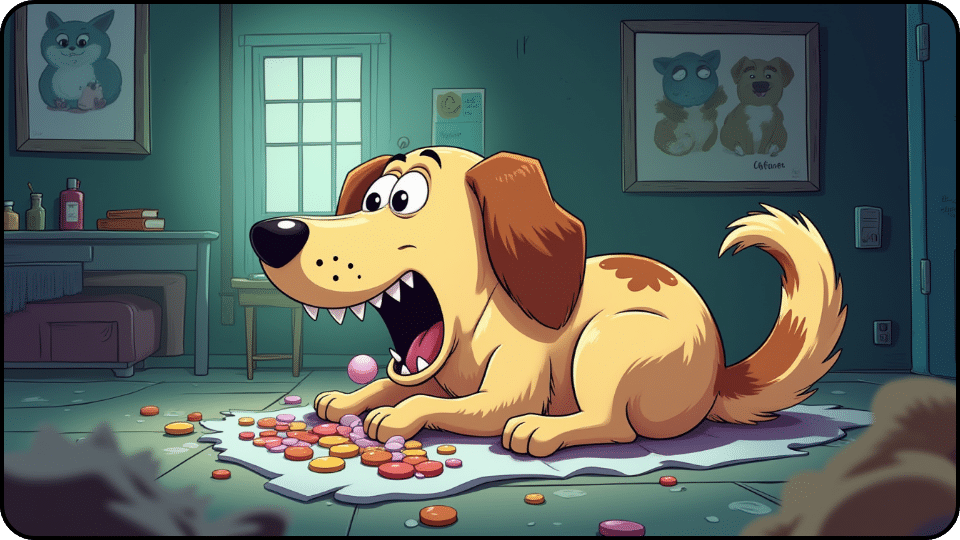
Administering Dog Liquid Medicine
Mixing liquid medication into your dog’s food can be an effective way to ensure they take their medicine. Use wet food or a small amount of canned dog food to mask the taste. This method is especially helpful if your dog refuses to take medicine directly. Choose food that your dog loves to increase the likelihood they will eat it all.
When preparing the liquid medication, carefully draw up the prescribed amount into an oral syringe. It’s crucial to use the correct dosage, so double-check the dosing instructions provided by your vet. If you’re unsure, consult your vet to avoid any mistakes. An oral syringe is a handy tool for administering liquid medications accurately.
To administer the medication directly, gently insert the syringe into the side of your dog’s mouth. Aim for the back of their mouth to prevent them from spitting it out. Slowly squirt the medication, allowing your dog time to swallow. Avoid rushing this process, as it might make your dog uncomfortable.
After administering the liquid medicine, reward your dog with praise or a small treat. This positive reinforcement helps create a good association with taking their medication. Consistent encouragement can make future medication sessions smoother for both you and your dog.
Compounded Medications and Other Alternatives
Compounded medications offer a tailored solution for dogs who resist traditional forms of medication. These medications can be customized into a flavored liquid or chew, making them more appealing. Flavored liquids can be mixed with your dog’s favorite food, while chewable forms can be given as a treat. This approach can significantly reduce the stress associated with medication time.
If your dog persists in refusing pills, consider alternative dosage forms. Transdermal gels, for instance, are applied to your dog’s skin, allowing medication absorption directly into the bloodstream. This method bypasses the digestive system, making it an excellent choice for dogs who refuse oral medication. It’s important to follow your vet’s instructions on how to apply these gels properly.
Veterinary pharmacies specializing in compounded medications can create customized formulations tailored to your dog’s needs. These pharmacies offer options to alter the flavor, form, or dosage, ensuring your dog receives their medication effectively. Consult with your vet to determine if compounded medications are suitable for your dog’s specific condition and preferences.
Exploring compounded medications and alternative forms can make administering medication easier and more appealing for your dog. Whether it’s a flavored liquid, chewable treat, or transdermal gel, these options provide flexibility in ensuring your dog takes their medication without fuss. Always consult your vet to find the best solution for your dog’s health and comfort.

Getting Help and Advice
Getting help from your vet can make a big difference when giving your dog medication. Ask your vet to demonstrate how to give your dog a pill or liquid medication. Watching a professional can provide valuable insights and boost your confidence.
They can show you the best techniques to ensure your dog swallows their medication safely and efficiently. If you continue to have difficulty medicating your dog, don’t hesitate to seek advice. Your vet can offer alternative methods or suggest compounded medications that might be easier for your dog to take.
They can also assess if there are any underlying issues causing your dog to resist medication. Open communication with your vet is key to finding the best solution for your pet’s needs. Consider having someone gently restrain your dog while you give the medication.
This can be particularly helpful if your dog is wiggly or anxious. Having an extra pair of hands allows you to focus on administering the medication correctly. Ensure that the person assisting is calm and familiar to your dog, as this helps keep the environment stress-free. Teamwork can make the process smoother and more effective.
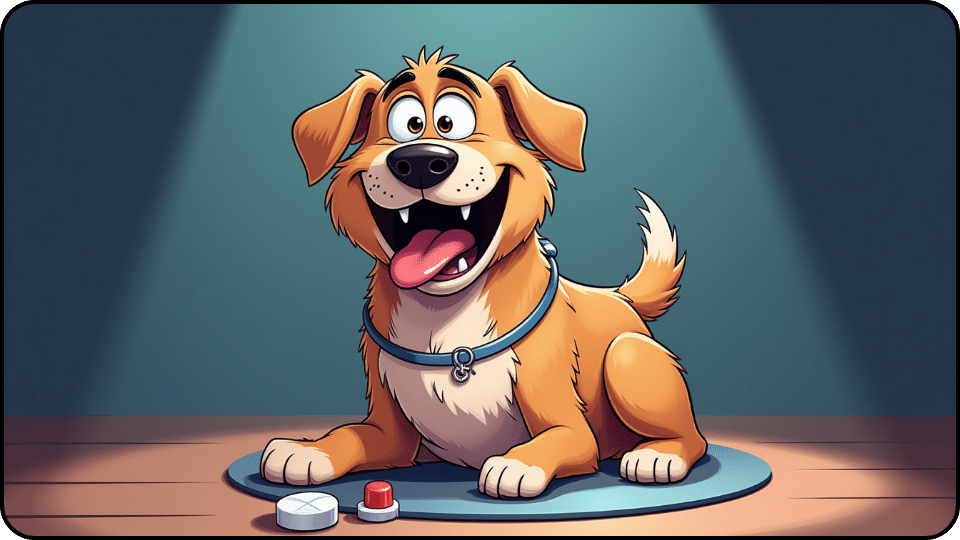
Final Thought
Giving your dog medication doesn’t have to be a battle. By using positive reinforcement, hiding pills in appealing food, or exploring compounded medications, you can find the method that works best for you and your dog. Always follow your vet’s dosing instructions carefully, and don’t hesitate to ask for help if needed. With patience and practice, medicating your dog can become a stress-free part of your routine.
Quick Answers for FAQs
Can I crush a pill for my dog?
Avoid crushing pills or swallowing capsules without the approval of your veterinarian. This is especially important for medications that are delayed-release or have been recalled. Crushing a pill could lead to side effects or render the medication ineffective. Instead, you can try mixing the medication with your pet’s food.
What is the vet’s technique for giving a dog a pill?
The ‘put-in’ method involves placing the tablet toward the back of the dog’s mouth and gently closing their mouth. Then, return the head or neck to its normal position while rubbing the throat to encourage swallowing and distract the dog.
What are the benefits of using pill wraps for disguising dog medication?
Have you ever wondered why wrapping your dog’s pills is important, especially when you’re short on time? There are several reasons to consider it. Dogs have a knack for remembering their experiences, which can make giving them pills more challenging. While some product labels might be misleading, not everyone will appreciate them. There are even those who hide pills in their dog’s bed, only to find them days later. My dog Daisy had a unique way of stashing pills in her fluffy beard!
How do you use pill pockets?
Some medications may be absorbed through food. Using pill pockets can make administering them to dogs easier. This method works best when dogs have been consuming treats regularly. Dogs chewing on soft treats may inadvertently swallow the unpleasant-tasting medication without realizing it. However, for dogs with food allergies, the ingredients in pill pockets might cause adverse reactions.
Why do vets prescribe medications or recommend supplements?
Ensuring your pet’s health involves providing medications or supplements as needed to maintain well-being. When your dog starts feeling better, it might be necessary to continue with specific treatments or supplements to support their ongoing health. It’s crucial to adhere to your vet’s advice regarding any medications or supplements. Medications are typically formulated compounds designed to treat or prevent diseases, while pharmaceutical drugs are specifically developed chemical compounds aimed at addressing physical ailments or alleviating symptoms of illnesses.
